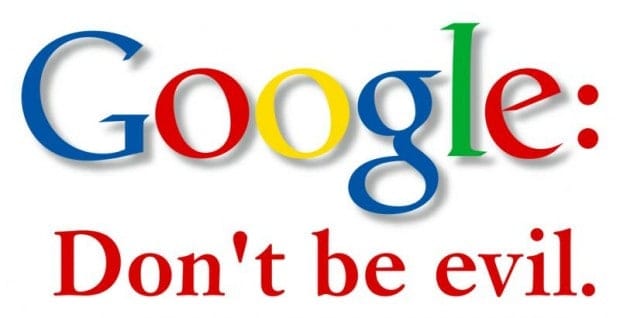David Beckworth did a podcast with Tyler Cowen, and there was an extensive discussion of recent Fed policy. Here’s one interesting comment:
Cowen: We did as well as we did coming out of 2008-2009 because of that work. Probably, we should have done more, as you and others have argued, but I give them a lot of credit for that. And I think next time around, if we have a crash like that crash, we will do more and tolerate a 4% inflation rate in a way that we didn’t in 2009, and things will be much better. That’s when the real payoff of what Scott has done and you have done, Bennett McCallum earlier, and others, next time around we’re going to say that we can live with 4% inflation, we can get it back down later on in a painless enough way, and in the situation like the next 2009, we’re going to do better. I strongly believe that. And all of the Fed talk in the meantime, it’s Straussian. The real question [is], would Congress put up with the Fed doing 4% inflation next time around? I think it’s yes.
After mid-2008, the recession of 2008-09 was an aggregate demand shock—a severe decline in nominal spending. If the Fed were to do NGDP level targeting during that sort of crisis, then you would not even need 4% inflation. Most of the excess NGDP growth during the recovery period would show up as real growth, not inflation.
[Technically, the recession began in December 2007, and there was high inflation during the first 6 months of 2008 due to rising commodity prices. But the deep slump began in mid-2008, and was caused by a negative demand shock with falling prices.]
In addition, I’d argue that a repeat of 2008-09 would only happen in if Fed policy had no credibility. But in that case the make-up policy would likely be ineffective, just as in 2009. The point of level targeting is not to get a quick recovery when there’s a deep slump, the point is to prevent a deep slump.
(Covid was one of those once in a century exceptions, when a deep slump was inevitable. But Covid is not a good example to think about when designing a system.)
When I make this argument people ask me “OK, but what if there is a deep slump, what then?” It’s clear to me that they don’t really believe level targeting will work. My answer is that you try to get back to the trend line if you’ve announced that as your policy, but I honestly don’t think it would work in that case. If markets don’t expect success, why should I? If an NGDP futures market showed a big drop in future expected NGDP, then you’d try to reverse that. But the market forecast already incorporates the likely policy response. So if markets are pessimistic then I’m also very pessimistic, even if the Fed claims to be following my preferred policy.
I thought the Fed had adopted average inflation targeting back in 2020. The markets saw through those claims before I did, and of course the markets were correct.
Cowen: Scott himself has said that it’s the worst time to have nominal GDP rules. In a pandemic, I think all rules get tossed out the window, whether or not they should be, they probably should be, but they will be. Then your price data… So, if I wanted to see a movie in May 2020, is the price infinite? Is the price still $14? That’s quite arbitrary. So, how you define the price indices for services, to me, becomes arbitrary. Nominal GDP targeting just becomes seat of the pants, which to be clear I’m fine with, but it’s not really nominal GDP targeting, because the quality of the price data is gone.
I’m confused by this. If movie theaters are shut down and price data is ambiguous, that’s a stronger argument for NGDP targeting. During Covid, the price of movies was ambiguous, but the contribution of movie theaters to NGDP was precisely zero. One reason that NGDP is superior to inflation is that NGDP is a relatively clear concept, whereas the price level is a very vague concept that’s never been adequately defined.
It’s true that I didn’t think it made sense to maintain steady NGDP growth during the shutdown, but there’d be no problem in continuing to target one or two-year forward NGDP along a 4% trend line during a pandemic. And as a practical matter, it’s impossible to stabilize “spot NGDP”, so NGDP targeting has always been about stabilizing future expected NGDP. The only thing that changes during a pandemic is that you might briefly wish to target NGDP a bit further out (say two years instead of one.) If the Fed had done so, we would have avoided the inflation fiasco of 2021-22. With 4% NGDP level targeting, inflation would have averaged 2% during 2019-23, even if headline inflation briefly reached 4% or 5% for a few months in 2022.
So perhaps once every 100 years there’s a shock that leads the central bank to target two year forward NGDP instead of one year forward NGDP. That’s doesn’t seem like a large concession.
Cowen: I don’t think that we can have a Fed bound by rules, as much as I would like to do that. The old Carl Schmitt idea, “he who is sovereign decides the exception.” I just don’t think you’re going to get around that. I don’t think the Fed would ever accept rules or recommend them to Congress. What you want is a Fed imbued with NGDP ideology, that at critical key moments in history, is willing to take some chances in the right direction. We got that. We’ve won, maybe temporarily, but for now-
I’m not sure what Tyler means by a “NGDP ideology”, but it can’t be anything like NGDP level targeting. The Fed followed up a disastrous NGDP shortfall in 2008-09 with a wildly excessive level of NGDP growth in 2021-23, with no attempt to revert to the previous trend line. So I’m not sure who has “won”, but it clearly is not market monetarists.
In case this post sounds too grouchy, I do recognize that the Fed now has a better understanding of the need for make-up policy. But being half way to enlightenment is very dangerous when an institution has a lot of discretionary authority and is subject to political pressure.
I added an update to my recent post entitled Nemo judex in causa sua, where I linked to a book by Peter Boettke, Alexander Salter and Daniel Smith. They do an excellent job showing the dangers of discretionary policy. Tyler might be correct that discretionary policies are inevitable. But in that case, there’s no reason to be optimistic about future Fed policy.
















